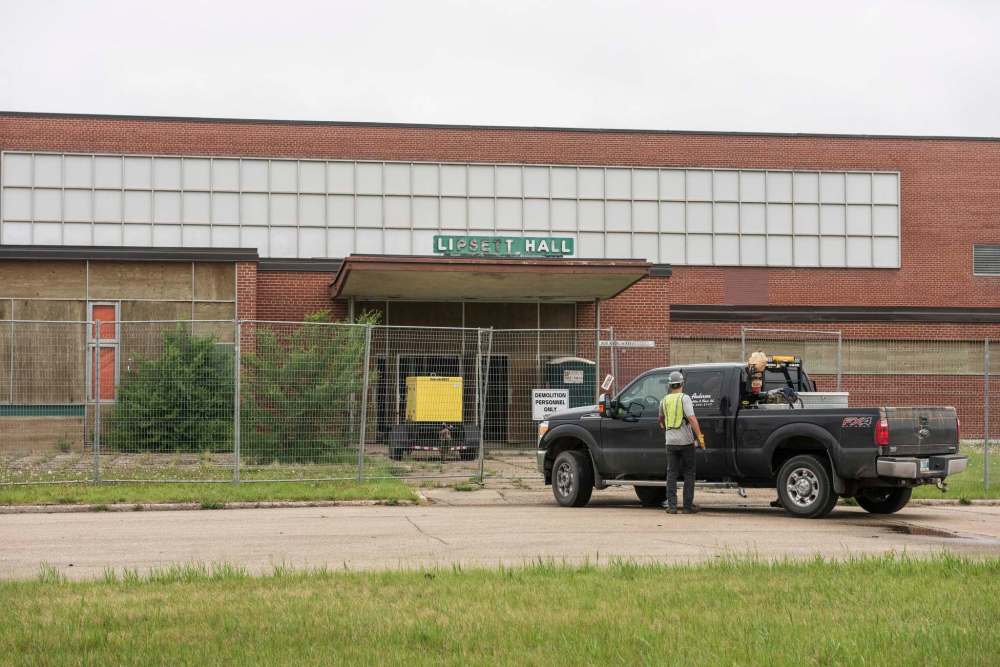Kapyong set to come down
First phase of the $2.6M project starts with demolition of barracks buildings
Advertisement
Read this article for free:
or
Already have an account? Log in here »
To continue reading, please subscribe:
Monthly Digital Subscription
$0 for the first 4 weeks*
- Enjoy unlimited reading on winnipegfreepress.com
- Read the E-Edition, our digital replica newspaper
- Access News Break, our award-winning app
- Play interactive puzzles
*No charge for 4 weeks then price increases to the regular rate of $19.00 plus GST every four weeks. Offer available to new and qualified returning subscribers only. Cancel any time.
Monthly Digital Subscription
$4.75/week*
- Enjoy unlimited reading on winnipegfreepress.com
- Read the E-Edition, our digital replica newspaper
- Access News Break, our award-winning app
- Play interactive puzzles
*Billed as $19 plus GST every four weeks. Cancel any time.
To continue reading, please subscribe:
Add Free Press access to your Brandon Sun subscription for only an additional
$1 for the first 4 weeks*
*Your next subscription payment will increase by $1.00 and you will be charged $16.99 plus GST for four weeks. After four weeks, your payment will increase to $23.99 plus GST every four weeks.
Read unlimited articles for free today:
or
Already have an account? Log in here »
Hey there, time traveller!
This article was published 30/05/2018 (2750 days ago), so information in it may no longer be current.
Fourteen years after the troops pulled out, and a decade after First Nations groups began fighting the federal government in the courts over the property, the long-awaited demolition of the former Kapyong Barracks has begun.
Maj. Dez Desjardins, of the Armed Forces property operations detachment, said crews have been working for about two weeks, readying the south Winnipeg site for demolition and removing hazardous materials.
Desjardins said the first phase of the $2.6-million project consists of demolishing 13 buildings south of Taylor Avenue, and on the east and west sides of Kenaston Boulevard, along with Lipsett Hall, north of Grant Avenue. It is expected to be completed by the end of the year.

“There will be some noise, but they have stipulated the demolition had to be done around normal business hours,” Desjardins said.
The next stage of demolition — the main barracks area and parade ground — will be tendered later this summer.
Last month, an agreement was signed in principle between the federal government and First Nations chiefs for control of the 160-acre site.
The agreement is intended to help guide the creation of a final settlement agreement, which is to include the future use of the land and terms of the sale. Details of the agreement are being kept confidential at this time.
When the deal is finalized, 110 acres will be transferred to seven Treaty 1 First Nations, and the remaining 50 acres will stay with Canada Lands Co., the federal Crown corporation which oversees public land.
The land will be held in common between the First Nations, and will be redeveloped as a joint urban reserve.
The chiefs have said the site could become a place for condo development, as well as a place for government, retail, arts, culture, cadet programs, green space and hotels.
Desjardins said passing motorists might look at some of the buildings and think they could be reused or repurposed — but not if they were to see the inside any of them.
“In Lipsett Hall (Kapyong’s former recreation centre), the mechanical room was full of water and we found it was still frozen. We’ve had doors open during the day to help it thaw. Even in these warm temperatures, it was an ice cube,” he said.
“The others have water that has made its way in, they have mould, and pipes have burst. And animals have made their way in some… there’s a family of foxes living under one of the barracks.”
In total, there are 40 buildings of different sizes spread over the site destined to come down, as well as roads and the parade ground to be removed.
The federal government tender for the demolition of the Kapyong Barracks required companies that applied and were hired have to have 51 per cent of the business owned and controlled by Indigenous people, and have at least one third of the firm’s employees be Indigenous, if it has six or more full-time staff.
kevin.rollason@freepress.mb.ca

Kevin Rollason is one of the more versatile reporters at the Winnipeg Free Press. Whether it is covering city hall, the law courts, or general reporting, Rollason can be counted on to not only answer the 5 Ws — Who, What, When, Where and Why — but to do it in an interesting and accessible way for readers.
Our newsroom depends on a growing audience of readers to power our journalism. If you are not a paid reader, please consider becoming a subscriber.
Our newsroom depends on its audience of readers to power our journalism. Thank you for your support.


